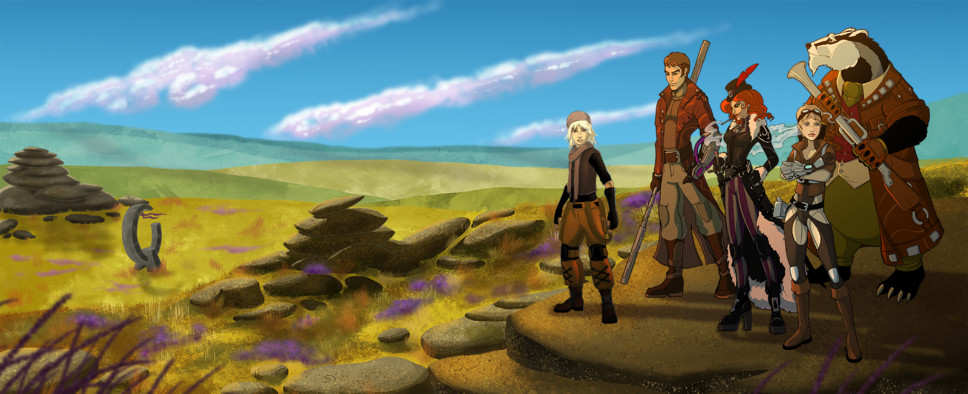Grimshade Successfully Funded, Combat Overview
-
Category: News ArchiveHits: 1424

Talerock's Kickstarter campaign for their turn-based story-driven RPG Grimshade has run its course and successfully concluded with a total of $107,041 pledged. As a result, the fantasy RPG about anthropomorphic animals and their tactical battles should be coming to your system of choice later this year. Here are a few words from the developers:
Well, the day has come — our Kickstarter campaign is over. Thanks to you, we reached our funding goal and even exceeded it!
But we aren't saying goodbye. In exactly one week, on June 28, we will send all our backers a survey to find out about their add-on preferences and the platforms they intend to play on. If you have any questions, we will be happy to answer them.
And while you're here, you may also be interested in an overview of the game's combat system:
Hello, dear friends. Today we want to tell you about the combat system in Grimshade. We were inspired by classic JRPGs and games like HoMM, Darkest Dungeon, Final Fantasy, etc.
Battles take place on a battlefield, which is split into two parts that are 3x4 cells in size each. Each side belongs to either the player or the opponent, and movement to the other side is restricted.
Each turn is based on the conditional turn-based battle system or CTB. The position on the CTB scale before the start of battle is determined by the actions of each character. During battle, each character uses skills, which are tied to the speed indicator. Any action—be it moving, waiting, or using a skill—spends a certain amount of speed and moves a unit on the CTB scale by this amount.
The skills of the characters and monsters are determined by which row on the battlefield they are in, and on which row of the opposite battlefield they are acting on. Therefore, skills that move enemies on the battlefield are highly valued. For example, you move an archer to the first row. What will that do? First, he can be attacked by melee units. Second, the archer won’t be able to shoot arrows at point-blank range. Other control skills can take a unit’s ability to move away or change his position on the CTB scale.
Each unit in the game has two indicators: HP and tension. They (or one of them) determine the damage of each skill. With HP, everything is simple—if the indicator falls to zero, the unit dies. Tension knocks out monsters, pushing them back on the CTB scale. It’s a bit more difficult with characters because the mechanics of game characters are attached to tension. For example, Alister should be calm in combat, but high tension prevents him from using skills. Ruby is the opposite, though: the higher her tension, the better she fights. And if Kiba’s tension is above 50, then it changes his set of skills.
After the battle, all of the characters’ tension is reset to the base value and life is fully restored. However, during battle, any hero can get injured. A character is injured when he has very low health reserves or when he receives huge damage. Injuries reduce the basic characteristics of characters, including their damage and combat potential. You can only get rid of injuries in safe zones, but getting to one is not a simple task when you are in the middle of a hostile location.
Moreover, each unit has avoidance tokens in battle. The token completely absorbs one hit and restores over time. Every character has different ways to get and restore tokens, as well as to get the maximum number of them. This encourages you to think of a strategy of getting your opponents’ tokens. For example, use quick and powerful blows to take them away from your opponent, and then deal a powerful blow to finish him off before he has the time to get new tokens.

